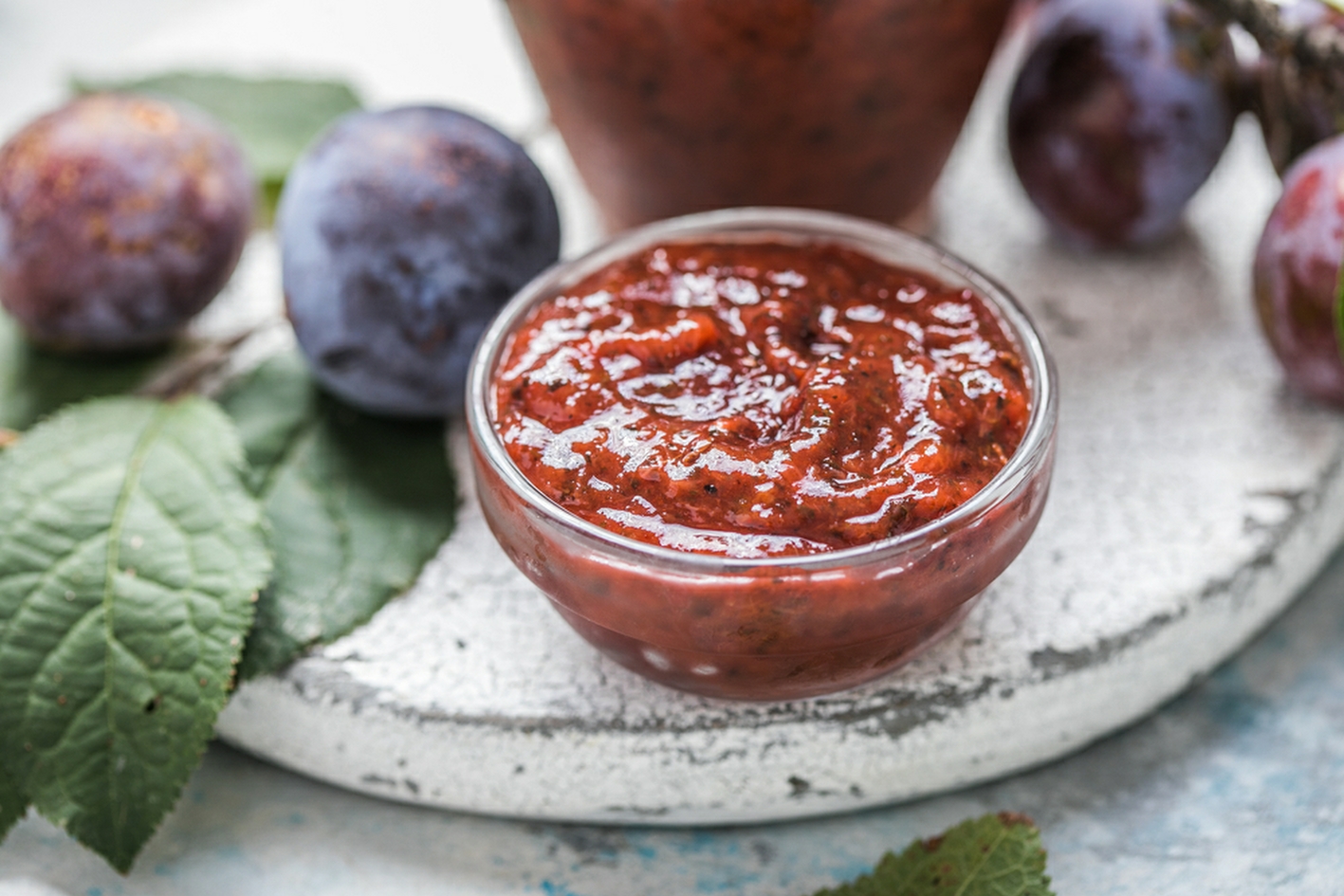
Georgia's tangy plum sauce
" Originating in Georgia, a country where plums grow abundantly in its varied climate, tkemali has been part of the culinary landscape for centuries "
Tkemali is a traditional Georgian sauce made from plums, celebrated for its sharp, tangy flavour and vibrant colour. Much like ketchup or chutney in other cuisines, it is considered an everyday condiment in Georgia, found on dining tables across the country. Its bold taste not only enhances grilled meats, potatoes and bread, but also reflects the ingenuity of Georgian cookery.
How is Tkemali made? The foundation of tkemali lies in wild or cultivated plums, typically harvested when just ripe. Green plums are used for spring and early summer sauces, while red and purple varieties are preferred later in the year. The plums are simmered until soft, then strained to produce a smooth, thick purée. Into this base go garlic, salt, coriander, dill, and generous amounts of fresh herbs such as pennyroyal or mint, which give the sauce its distinctive aroma. A balance of chilli and fenugreek often adds warmth and complexity.
There are two principal types of tkemali. Green tkemali, made from unripe plums, is sharper and more acidic, perfectly suited to cutting through rich or fatty foods. Red tkemali, from riper fruit, is milder and slightly sweeter, though it retains a pleasant tartness. Regional and household recipes vary widely, with some favouring a spicier kick while others highlight the herbaceous notes.
Unlike many sauces that rely heavily on sugar, tkemali is defined by its natural sourness. The herbs are crucial, especially pennyroyal, which sets Georgian tkemali apart from other fruit-based condiments. Families often prepare large batches during plum season, bottling and storing the sauce for use throughout the year, ensuring its presence at both daily meals and festive feasts.
Tkemali is strikingly versatile. It is most famously paired with grilled meats such as kebabs and sausages, but it also lifts roasted potatoes, beans, or even simple bread. In Georgian cuisine, it plays the role of a balancing element, cutting through heaviness and refreshing the palate. Guests at a Georgian supra (Ed: feast) will almost always encounter a dish enlivened by this sauce.
A sauce in context: Tkemali can be seen as Georgia’s answer to condiments such as ketchup, chutney and Middle Eastern fruit sauces. Like ketchup, it is a household staple, but its tartness and herbal freshness make it far more complex. In spirit it is closer to Indian chutneys, which combine fruit with spices to balance a meal. It also shares kinship with Levantine pomegranate molasses, another tangy addition to savoury dishes. Yet tkemali remains uniquely Georgian, shaped by local plums and the generous use of herbs.
Originating in Georgia, a country where plums grow abundantly in its varied climate, tkemali has been part of the culinary landscape for centuries. It embodies the Georgian approach to food: bold flavours, fresh herbs, and a celebration of what the land provides. Today, it remains both a household staple and a proud symbol of Georgian gastronomy.
Prepared by a Chaîne News Online Staff Writer
Researched from various sources. E&OE